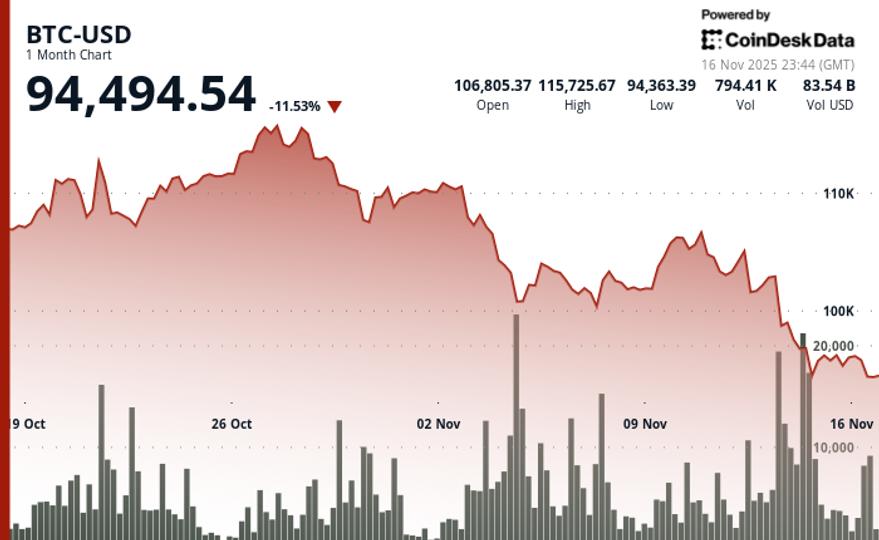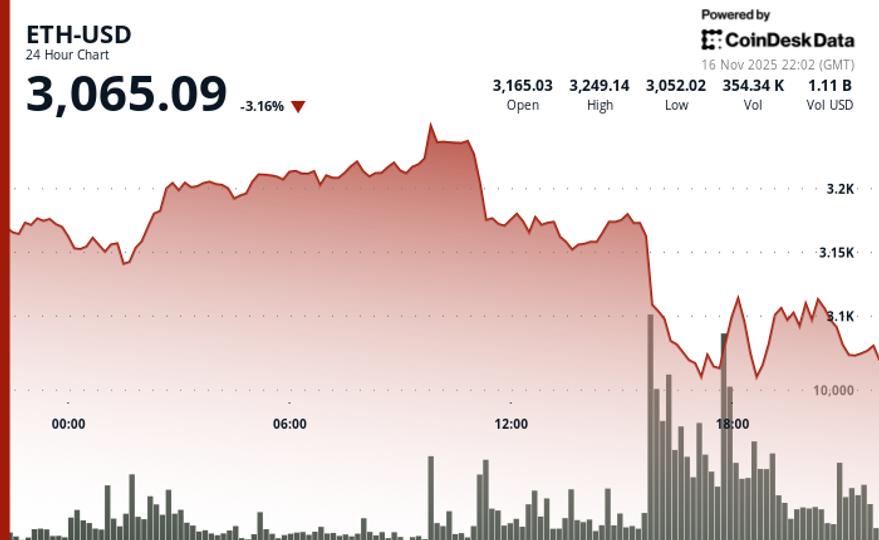
Bitcoin Drop: Year’s Beginning Gains Erased


Bitcoin fell below $93,714 on Sunday. Just a little over a month ago, this dominant cryptocurrency reached an all-time high, but it has erased over 30% gains recorded since the beginning of the year due to the fading crypto-friendly stance of the Trump administration and a cooling in high-tech stocks, leading to a decrease in overall risk appetite.
According to Bloomberg data, Bitcoin hit a record $126,251 on October 6, but this level quickly declined within four days as Trump’s unexpected tariff announcements caused market fluctuations worldwide. Matthew Hougan, chief investment officer at San Francisco-based Bitwise Asset Management, noted, "The overall market has moved away from risk," indicating that cryptocurrency was the first asset to signal this situation.
In the past month, large buyers like exchange-traded funds and institutional property owners have pulled back, leading to a lack of strong support flow in the market. Throughout the year, institutions have been key factors for Bitcoin’s legitimacy and price, yet ETFs have raised over $25 billion, bringing the assets to approximately $169 billion. However, this story stands on a fragile ground, and today’s pause has increased the risks associated with this asset for the market.
Jake Kennis, senior research analyst at Nansen, stated, "The wave of selling represents the intersection of long-term investors looking to take profits, institutional exits, macro uncertainty, and losing leveraged positions" and noted that the current market condition appears to have turned the direction downwards.
One of the most notable examples indicating the weakening purchasing power in the digital asset world is linked to the software company Strategy Inc. and its CEO Michael Saylor. The company, once regarded as a leading example of corporate crypto investments, is now trading at values close to its Bitcoin reserves, reflecting that investors are questioning Saylor's high credibility.
Bitcoin is known to have gone through a cycle reminiscent of its entry into the mainstream in 2017, when it saw over a 13,000% increase, followed by a nearly 75% drop within a year. Matthew Hougan remarked, "The sentiment I feel in the crypto retail sector is quite negative. People do not want to experience another 50% pullback. This is causing the public to withdraw from the markets."
Bitcoin, which shook investors throughout the year by dropping to $74,400 in April due to tariff announcements, has since attempted to reach record levels again. Currently, Bitcoin represents about 60% of the nearly $3.2 trillion market value of cryptocurrencies.
The MarketVector index, which tracks the bottom half of the top 100 digital assets, shows a decline of about 60% this year. Chris Newhouse, research director at Ergonia, added, "Markets are always in a state of flow and pause, and the cyclicality of crypto assets is not new, but I have found that the overall sentiment is skeptical about capital distribution."
```.png)
Yakında Tüm Platformlarda
Sizlere kesintisiz haber ve analizi en hızlı şekilde ulaştırmak için. Yakında tüm platformlarda...








.png)